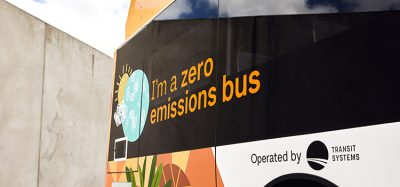WMATA releases strategic plan to accelerate transit-oriented development
- Like
- Digg
- Del
- Tumblr
- VKontakte
- Buffer
- Love This
- Odnoklassniki
- Meneame
- Blogger
- Amazon
- Yahoo Mail
- Gmail
- AOL
- Newsvine
- HackerNews
- Evernote
- MySpace
- Mail.ru
- Viadeo
- Line
- Comments
- Yummly
- SMS
- Viber
- Telegram
- Subscribe
- Skype
- Facebook Messenger
- Kakao
- LiveJournal
- Yammer
- Edgar
- Fintel
- Mix
- Instapaper
- Copy Link
Posted: 13 April 2022 | Intelligent Transport | No comments yet
In addition to supporting WMATA’s mission to provide safe, reliable and affordable transportation, the 10-year plan will foster sustainable regional growth by creating new housing and business opportunities located near transit.


Credit: Washington Metropolitan Area Transit Authority
The Washington Metropolitan Area Transit Authority (WMATA/Metro) has announced the release of its first ever Strategic Plan for Joint Development – a detailed roadmap to increase private development opportunities on Metro-owned land.
The 10-year initiative establishes a goal to execute 20 joint development agreements by 2032, while strengthening co-ordination with local jurisdictional partners and streamlining processes for private development partners.
WMATA’s joint development programme is critical to its mission to provide safe, reliable and affordable transportation, and delivers valuable benefits for Metro and the region by:
- Increasing Metro ridership from new residents, workers and visitors
- Generating new revenue from fares and real estate proceeds that support Metro’s operations
- Fostering sustainable regional growth and competitiveness by creating new housing and business opportunities near transit
- Generating new state and local taxes on formerly undeveloped and tax-exempt land.
“Transit-oriented developments not only support Metro operationally, but they also bring important stakeholders together to reinvigorate the region,” said WMATA’s Executive Vice President and Chief Financial Officer, Dennis Anosike. “This strategic plan lays out a very clear roadmap that details our future priorities. I’m excited to see these transformations take shape and place accessibility to transit at the forefront of urban planning.”
Biden Administration reveals USDOT’s fiscal year 2023 budget
WMATA’s 10-year initiative to execute 20 new joint development agreements reflects an increased pace of activity. To achieve this ambitious objective, the authority has established four strategies, which include partnering with local jurisdictions, evaluating the right-size transit facilities, increasing development readiness and minimising implementation risks.
In order to achieve its joint development goals, WMATA recognises that it will require support, co-investment and close co-ordination with local jurisdictional partners. The majority of the authority’s remaining joint development sites have existing transit facilities that must be relocated or replaced. They also have varied real estate market conditions and zoning allowances that impact their development potential. Addressing these challenges in partnership with jurisdictions will be critical to unlocking the full potential of Metro’s real estate portfolio.
The plan also establishes a prioritisation schedule based on the development potential, infrastructure needs and market readiness of each station, and a timeline for planning and solicitation activities while recognising that specific conditions may change over the next 10 years and that WMATA can adjust station priorities accordingly.
Related topics
Accessibility, Infrastructure & Urban Planning, Public Transport, Transport Governance & Policy
Related cities
Washington
Related countries
United States
Related organisations
Washington Metropolitan Area Transit Authority (WMATA)
Related people
Dennis Anosike








